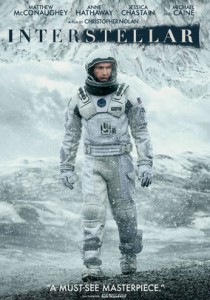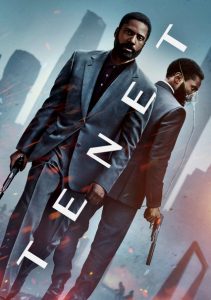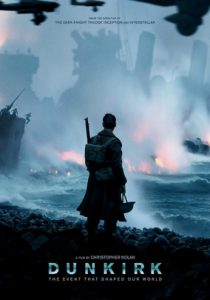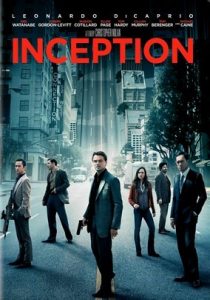Interstellar-2014
Director Christopher Nolan
Starring Matthew McConaughey, Jessica Chastain
Scott’s Review #277

Reviewed September 25, 2015
Grade: B-
Interstellar (2014) is an interesting film to review.
Science-fiction/futuristic epic with a run time of nearly three hours and is complex and intricate. It is the latest offering by director Christopher Nolan.
I cannot say I loved the film, however, I did appreciate and marvel at the visual and technical aspects of it, which completely usurps the convoluted plot, made difficult to follow due to changing worlds and galaxies.
The film reminds me of Inception (2010) with an obvious homage to 2001: A Space Odyssey (1968), the former directed by Nolan, but not quite as compelling from a story point of view as Inception was.
The complexities of different entities, worlds, and layers of worlds are featured and admittedly, mind-blowing, which is the weak part of the film.
Making the film arguably too intelligent, it loses the audience’s attention.
By too intelligent, I mean too complex. As I review the film, I see two halves-the story side and the visual side. In Interstellar, both are essential components and one fails and one marvels.
The story goes something like this. Matthew McConaughey plays Cooper, a widowed, former space expert stuck in a small town in the mid-west, where he begrudgingly runs a farm, living out an unsatisfying existence.
The Earth’s food and crops are slowly running out and the planet is dying. His two children, daughter Murphy and son Tom face a bleak world.
One day, a dust pattern with coordinates leads Cooper and Murphy to a secret NASA team intent on finding other worlds and attempting to save Earth. The team is led by Dr. Brand, a college professor, and science wizard, played by Michael Caine.
Cooper, naturally, is chosen to lead the venture, which could take him away from his family for years. He accepts much to Murphy’s chagrin. Once in outer space- assisted by Amelia Brand (Dr. Brand’s daughter), the team embarks on an endless mission leading them to different planets and one strange encounter with a rebel astronaut (played wastefully by Matt Damon).
Years later (on earth anyway) Murphy and Tom (now grown and played by Jessica Chastain and Casey Affleck) assume their father Cooper is dead.
Critically, the story is way too much to comprehend. I let go of the story instead of focusing on the visual spectacle I was treated to.
The plot eventually meanders off track as the team traverses through a space wormhole created by an alien intelligence and travels fifty years without aging. Life has gone on over planet Earth. Some characters age, others do not.
To summarize, the story is convoluted and impossible to follow.
Speaking of the story side of Interstellar, the writing contains an irritating wholesomeness, especially in the early stages- pre-outer space.
McConaughey was given this tough, machismo side to him that screams of Hollywood traditionalism- almost like “I am a man- I save the family”. Haven’t we seen this too many times in film?
I also found the relationship between Cooper and his young daughter Murphy incredibly saccharine and screamed of Hollywood schmaltz.
McConaughey was given and succeeded in delivering, one great crying scene.
The visual aspect of Interstellar is a spectacle and much, much better than the story, especially during the final third of the film. The sheer grandeur is astounding. When the crew lands on Miller’s planet, an ocean world, a great tidal wave topples their space ship killing one of the team.
The massive look of the tidal wave is monumental in size and ferocity. Later, when the crew lands on an icy planet, the immense coldness and shape of the planet work perfectly and one feels like they are in outer space.
How inventive and creative is the scene where Cooper attempts to contact a character through a bookshelf. The scene is set up like a maze with different periods, colors, and shapes, seemingly blending is very impressive and artistic.
Visually speaking, Interstellar has some similarities to the 1968 epic 2001: A Space Odyssey. Grandiose, artistic, experimental, and epic along with the obvious space theme allow the two films to be compared.
However, where 2001: A Space Odyssey was about life and contains a clear and powerful message, I did not find the same with Interstellar. Instead, I did not find a message, only a confusing story, mixed with spectacular visuals.
Oscar Nominations: 1 win-Best Original Score, Best Sound Editing, Best Sound Mixing, Best Production Design, Best Visual Effects (won)





